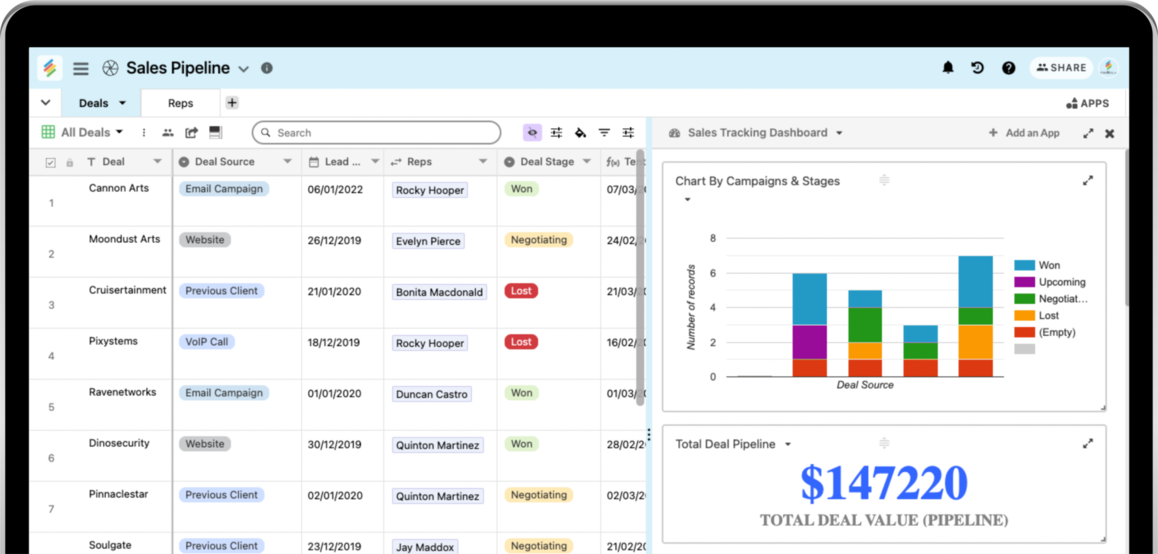No-Code Open Platform Data Source Production: Streamline Facility Growth Jobs
No-Code Open Platform Data Source Production: Streamline Facility Growth Jobs
Blog Article
Exploring the Advantages of Scalable Data Sources That Need No Coding Abilities for Effective Data Monitoring Solutions
The development of scalable databases that remove the need for coding abilities provides a transformative chance for companies looking for effective data management solutions. By enabling non-technical individuals to harness the power of data with user-friendly user interfaces, these systems boost accessibility and foster collaboration across diverse teams. Their cost-effectiveness and adaptability to developing company requirements can dramatically improve functional processes. As we consider the ramifications of such advancements, it comes to be vital to check out exactly how they can improve the landscape of data monitoring and drive sustainable growth in an affordable setting.
Boosted Access for Users
Enhanced accessibility for users is an important facet of scalable data sources, making certain that information administration systems are user-friendly and intuitive. In an era where data-driven decisions are paramount, accessibility allows a wider array of customers, consisting of those without considerable technological knowledge, to involve with database systems efficiently. This democratization of data gain access to helps with improved collaboration across departments, empowering employees to remove insights and make informed decisions.
Straightforward user interfaces, such as drag-and-drop functions and visual information depiction, simplify complex information communications. These enhancements lower the discovering curve related to conventional data source administration, allowing users to concentrate on leveraging information as opposed to grappling with technological complexities. Moreover, scalable data sources typically incorporate real-time analytics and personalized control panels, providing customers with instant insights tailored to their specific demands.

Cost-Effectiveness and Source Savings
Reliable data management not just depends upon access however also on cost-effectiveness and source cost savings. Scalable databases created for individuals with no coding abilities considerably reduce economic concerns generally related to standard database monitoring systems. By getting rid of the need for specialized shows experience, companies can allocate their resources more successfully, focusing funds on core organization activities instead of extensive training or working with proficient personnel.
Additionally, these data sources typically make use of cloud-based options, which even more reduce prices associated to hardware and maintenance. Organizations can scale their data source services according to their requirements, avoiding the expenditures incurred from over-provisioning resources. This adaptability indicates businesses can adapt to altering needs without incurring unneeded expenses, bring about considerable long-lasting cost savings.
Additionally, easy to use interfaces simplify data entrance and management processes, lowering the moment invested in administrative tasks. This efficiency equates into labor price savings, permitting teams to concentrate on strategic initiatives instead of routine upkeep. On the whole, embracing scalable databases that need no coding abilities cultivates a much more economical technique to information monitoring, allowing organizations to optimize their resources while preserving high levels of functional efficiency.
Improved Cooperation Across Teams

Furthermore, scalable databases help with smooth interaction amongst employee. With easy to use user interfaces that call for no coding skills, employees can quickly develop, change, and share reports or dashboards customized to their specific requirements. This democratization of data encourages non-technical individuals to contribute insights, improving the joint setting.
Furthermore, these data sources support concurrent gain access to, permitting numerous customers to function on the very same dataset simultaneously. This feature enhances productivity, as teams can participate in joint data evaluation without the threat of variation control concerns. The capacity to leave notes or remarks directly within the database even more promotes discussion and makes clear information analyses.
Streamlined Information Administration Processes
In today's data-driven atmosphere, organizations recognize the requirement of streamlined our website data management refines to make best use of performance and precision. By leveraging scalable databases that require no coding abilities, organizations can streamline their data handling and reduce the complexities commonly related to standard database systems. This ease of access empowers non-technical customers to involve directly with information, assisting in quicker decision-making and minimizing reliance on specialized IT employees.
Structured data management procedures improve workflow by automating regular jobs such as data entry, recognition, and reporting. Automated data assimilation makes certain that details from different resources is accumulated seamlessly, removing silos and promoting a combined sight of important service metrics (no-code). Additionally, user-friendly user interfaces enable personnel to control data conveniently, enabling them to generate understandings that drive strategic campaigns without the need for extensive training.
This efficiency not just accelerates operational processes yet likewise minimizes the possibility for human error, ensuring that information remains exact and dependable. Eventually, structured data management procedures through scalable databases try these out bring about improved performance, allowing companies to focus on core tasks while making sure that their data administration techniques are effective and reliable.
Scalability for Expanding Companies

For expanding enterprises, the ability to scale up or down is essential. A scalable database can deal with an influx of data generated from new customers, items, or solutions, making sure that company operations stay continuous. These data sources supply the ability to manage peak loads efficiently, which is essential during durations of fast growth or seasonal spikes.
In addition, several scalable data source services are developed with straightforward user interfaces that call for no coding abilities, equipping non-technical personnel to manage data properly (no-code). This democratization of information management enables companies to allocate sources tactically and reduce dependency on specialized IT personnel
Inevitably, embracing a scalable database not only enhances functional see this here performance however likewise fosters an atmosphere where companies can advance and introduce without the restraints of standard data source systems. This flexibility positions organizations for long-term success in today's affordable landscape.
Verdict
In verdict, scalable data sources that require no coding skills give considerable advantages for effective information administration. These systems improve availability for non-technical users, lower functional costs, and promote partnership across groups. By streamlining data monitoring procedures and supplying scalability for growing businesses, such services allow companies to adjust to altering needs successfully. Inevitably, the fostering of these straightforward data sources cultivates technology and placements businesses for long-term success in a vibrant setting.
Improved availability for individuals is an important element of scalable databases, ensuring that information monitoring systems are instinctive and easy to use.Straightforward user interfaces, such as drag-and-drop functions and visual information depiction, streamline complicated data interactions. On the whole, embracing scalable databases that require no coding abilities cultivates a more cost-efficient strategy to information monitoring, allowing organizations to maximize their sources while preserving high levels of functional effectiveness.
By leveraging scalable data sources that call for no coding skills, services can streamline their data handling and lower the complexities typically connected with traditional database systems - no-code.Structured data administration procedures improve operations by automating routine jobs such as information entrance, recognition, and reporting
Report this page